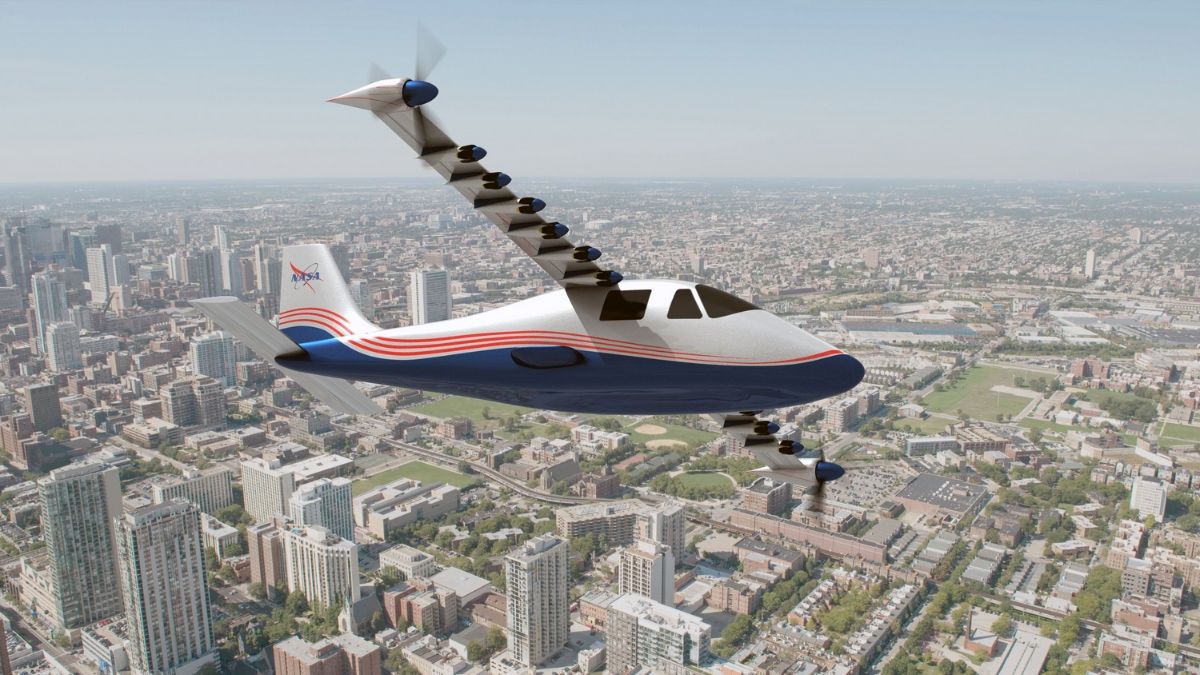NASA X- 57 Maxwell: First all-electric experimental aircraft

NASA is always paving the path for the next generation towards a better future with their new innovations. NASA introduced it’s very first all-electric experimental aircraft X 57 Maxwell back in 2016. The flight is currently in the testing period since 2019. NASA X 57 Maxwell will first have its official flight in the third quarter of 2020.
NASA has used multiple leading-edge technologies in this ambitious all-electric flight. It seems like NASA aims to show that this type of airplanes “can be more efficient, quieter and more environmentally friendly than airplanes powered by traditional gas piston-engines“.
NASA’s X-57 Maxwell weighs approximately 3000 pounds making it lighter and more technologically efficient. The aircraft has a cruise speed of 172 mph at 8000 ft. It can also operate up to 14,000 ft height. X 57 is powered by 860 pounds lithium-ion phosphate batteries which can give it almost 47-kilowatt hours of flight time.
Design
NASA’s X-57 Maxwell is modified from the Tecnam P2006T aircraft and 14 electric motors driving propellers. The propellers are mounted at the wings of the plane and can be used during the take-off and landing. According to the reports, the additional motors generate additional airflow which generates greater lift for the plane. The aircraft can carry two passengers each time during the flight.
Interestingly, one can control the propellers individually. This gives the plane the ability to change the over-wing airflow pattern to cope with flying conditions. Also, the electric motors of the aircraft are smaller and lighter than the jet engines of equivalent power.
As the plane goes faster, the propellers will fold back to reduce the drag and will leave the two large wingtip motors to provide thrust. Moreover, the air-cooled motors and propellers weigh 15 pounds each.
The X-57 Maxwell went through four stages of modification to get the best results. At the first stage of modification, the wing of the plane was reduced to 42% of the regular size to reduce the drag. In the second stage, gas-powered engines were replaced by the all-electric engines to turn the propellers.
The modifiers replaced the original wing of the plane with a smaller, skinnier and high-aspect-ratio wing at the third stage. They also moved the two large motor to the wingtips and add 12 pots in that area.
Lastly, at stage four, they installed 12 electric motors to the pods for greater lift. The researchers wanted to achieve a better result through this step by step modification.
First all-electric aircraft
Replacing the fuel-based motors with electric motors make the aircraft more efficient. Electric powered motors can be placed anywhere in the plane. The 100% electric propulsion system also leads the way of saving both fuel and money for the future.
NASA X-57 Maxwell is going to be the first all-electric X-plane from NASA. The plane is currently at the agency’s Armstrong Flight Research Center in Edwards, California. The aircraft is named after a 19th-century Scottish physicist who pioneered the theory of electromagnetism.
However, we still have to wait for the final test of the aircraft. We hope that NASA gets the best results and succeeds in its mission.

No comments